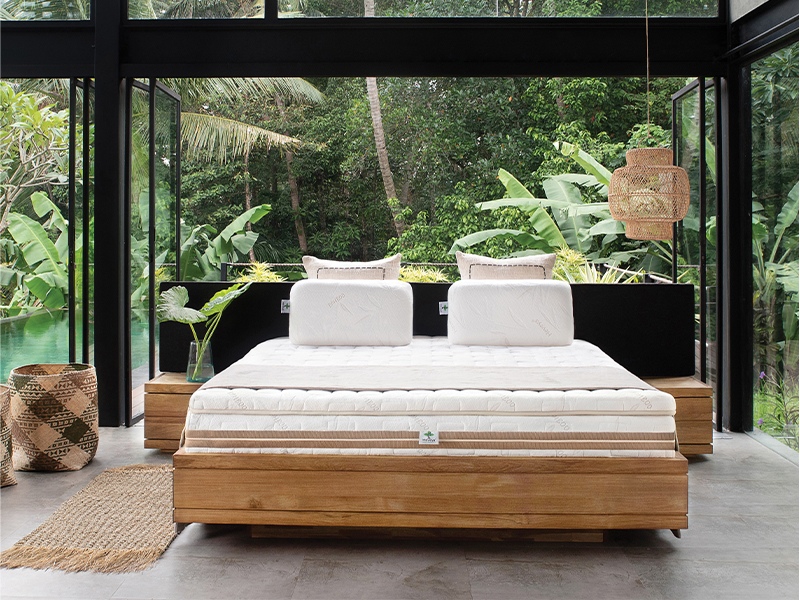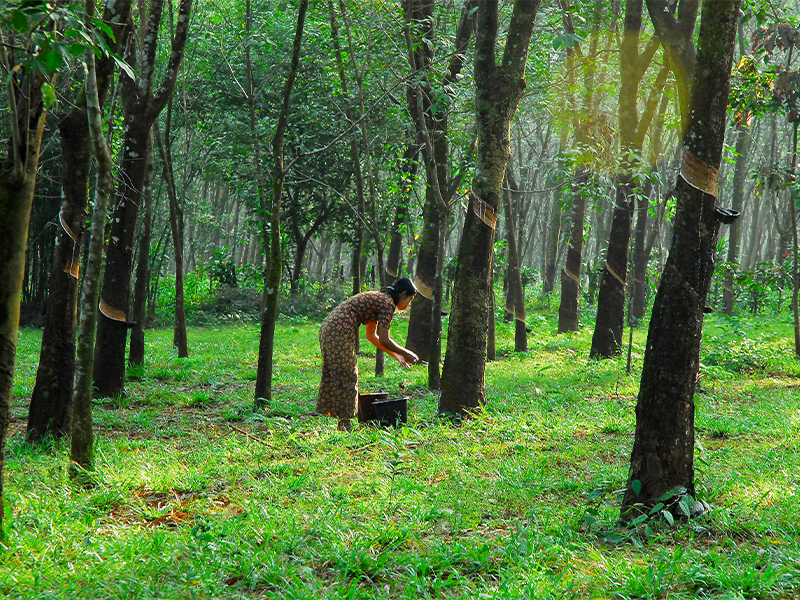They’re not just ultra-comfortable to sleep on; the natural organic latex mattresses from Heveya have a great eco-friendly backstory around the material they’re made from and its sustainability. We delve into some of the details.
A typical rubber plantation
Plantations of Hevea brasiliensis (rubber trees) can be found across Asia. Rubber tapping involves making incisions in latex vessels that are just deep enough to tap the vessels without harming the tree’s growth. Rubber sap is then collected in small buckets and transported for processing.
Harvest can begin at around five to six years after planting, continuing until the tree stops producing rubber at 26 to 30 years. To keep the soil nutrient-rich, revitalisation techniques are used toward the end of the tree’s lifespan.
The organic alternative
The Heveya plantation in Sri Lanka is the world’s first certified-organic latex plantation. To achieve this status, the soil had to be treated for four years with 100 percent organic fertilisers to wash out previous fertilisers used on the land. Only then could the rubber trees be planted. Regular unannounced checks of chemical levels in the soil and the latex milk are performed by the Peterson Control Union Group, an independent European organisation.
Sustainability and eco-friendliness
After 25 years of producing latex, rubber plantations are still viable for re-planting – with more rubber or other crops. This is especially true for organic plantations as the soil is kept chemical-free and safe for use. For Heveya, being able to reuse the land is especially important given the impending global land shortage. It also creates employment opportunities for local communities and contributes to local economies.
Energy efficiency
Whether or not rubber trees are being tapped for rubber, they’re still working as trees to recycle carbon dioxide in the air and replace it with oxygen, combating the greenhouse effect and keeping global temperatures down. (One study estimates that rubber trees remove 363 million kilograms of CO2 from the atmosphere annually!)
Also, because the trees do most of the work of producing the rubber, the energy expended in obtaining natural rubber comes from planting, harvesting and transportation.
All Heveya products are manufactured by the first Certified Carbon Neutral latex producer in the world, demonstrating the company’s commitment to the environment.
A worthy end product
When you bear all of these factors in mind, it’s no surprise that Heveya mattresses boast so many plus points. Made from 100 percent GOLS-certified organic latex sourced from the aforementioned Sri Lanka plantation, and with no chemicals added, the mattresses are naturally hypoallergenic and resistant to dust mites, bacteria and mould. They’re also made without glue or metal springs, the former can have negative health ramifications and render a mattress rigid and warm; the latter can amplify electromagnetic radiation.
The end result is better quality sleep – which is so important for our physical and mental wellbeing.

Donations and charities
The company donates a portion of sales revenue towards charitable institutions, regardless of profit. These charities – for example, the Sumba Hospitality Foundation in Eastern Indonesia – provide educational and employment opportunities for local communities and help underprivileged youth break the circle of poverty. Heveya also works with Replant to help protect and nurture the Dayak community of Borneo, and restore rainforests in the area.
Another noteworthy initiative is that all Heveya packing and marketing materials are printed on recycled paper, and the transport of materials is done in the most pollution-free way possible.
Browse Heveya’s range of natural latex organic mattresses and other bedding online or visit the showroom at 28/Floor, Horizon Plaza, Ap Lei Chau (located in TREE’s Flagship Store).
28701582 | 852 62861132 (WhatsApp) | heveya.hk
Subscribe to Expat Living now so you never miss an issue!







